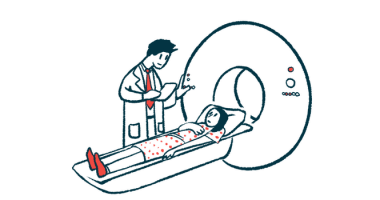2 Tumor Surgeries Lead to Similar Results, Different Recovery Times
Endoscopic pituitary surgery is less invasive than traditional microscopic method

Removing a pituitary tumor through the nostrils with an endoscope led to shorter recovery times for patients with Cushing’s disease than for those who had the surgery through the traditional microscopic approach, a study reports.
However, similar remission, recurrence, and complication rates were found between patients, regardless of the type of transsphenoidal surgery (TSS) used.
The study, “Long-term outcomes and complications from endoscopic versus microscopic transsphenoidal surgery for Cushing’s disease – a 15-year single-center study,” was published in the journal World Neurosurgery.
TSS is the first-line treatment to surgically extract pituitary tumors in Cushing’s patients. In this method, surgeons go through the nose and sinuses to reach the pituitary gland.
In the traditional approach, called microscopic TSS, an incision is made under the upper lip, and the nasal septum — the cartilage and bone in the nose — is removed. A microscope is used in this technique. Endoscopic TSS is a more recent and less-invasive approach. The surgery is performed through the nostrils with the help of an endoscope, a small lighted camera instrument.
Over the last two decades, endoscopic TSS has been the method of choice over the microscopic approach for many surgeons.
“This paradigm shift is true for many neurosurgical centers worldwide,” the researchers wrote.
To compare these two surgical techniques in terms of remission and recurrence rates for Cushing’s, researchers reviewed the medical records and MRI scans of 40 patients who received their first TSS at Sahlgrenska University Hospital between 2003 and 2018.
The team noted that the last microscopic TSS was conducted in 2010. Since then, all TSS for Cushing’s disease were performed with the endoscopic technique.
Remission was defined as having low plasma cortisol levels after surgery and needing hydrocortisone replacement therapy, as well as regression of Cushing’s-related symptoms and no additional treatment required for the disease until the latest follow-up. The researchers defined recurrence as showing signs of disease relapse after surgery, which then required treatment.
The study included 14 patients (with a mean age of 44 years) who underwent microscopic TSS and 26 (mean age 48 years) who underwent endoscopic TSS. The patients were mostly women.
The median follow-up was 131 months (about 11 years) for patients who underwent microscopic TSS and 66 months (around 5.5 years) for patients in the endoscopic group.
Most patients attained remission: 12 in the microscopic group and 19 in the endoscopic group. Disease recurrence occurred in 25% of the patients who initially attained remission in the microscopic TSS group and in 16% of those who initially attained remission in the endoscopic group.
No statistically significant differences in remission or recurrence rates were reported between the two groups.
Gross total resection — the removal of all the tumor, as detected by MRI — was achieved in 12 of 13 patients in the microscopic group, compared with 16 out of 26 patients in the endoscopic group. Again, these differences were not statistically significant.
No serious complications were reported, and none of the patients died during surgery. Five patients in each group ultimately developed pituitary insufficiency — a condition in which the pituitary gland fails to produce enough of certain hormones.
Further analysis showed that patients in the microscopic group spent a median of 15 days in the hospital, while those in the endoscopic group spent a median of 8 days.
This “could most likely be attributed to a combination of factors such as trends over time to decrease time for hospital stay, and the less invasiveness of the endoscopic technique,” the researchers wrote.
The endoscopic group was then divided into two subgroups based on the year of surgery. One group included patients who were operated on between 2004 and 2011, and the other group had surgery between 2012 and 2018.
No differences in remission rates were observed in the late endoscopic group compared with the earlier group, as well as between the microscopic group and the two endoscopic groups.
“Endoscopic [TSS] for [Cushing’s disease] showed no difference in terms of remission, recurrence, gross total resection, or complication rates compared to the microscopic approach over 15 years,” the researchers wrote. “Postoperative hospital stay was significantly shorter in the endoscopic endonasal surgery group than in the microscopic group, partially because endoscopic surgery is less invasive.”
“Further prospective studies are needed to better address the possible differences between the two surgical techniques to optimize the treatment for patients with [Cushing’s disease],” they added.








